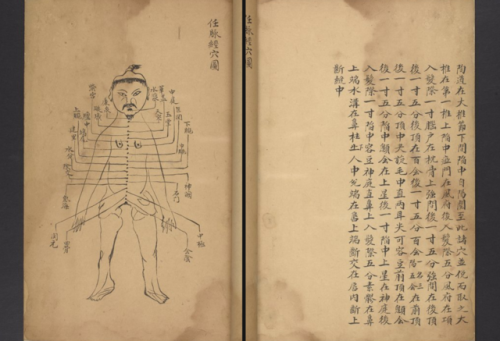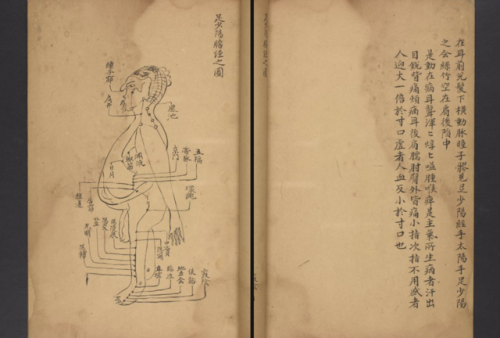Laplace Transform Table. Source. (I’m Obsessed.


Laplace transform table. Source. (I’m obsessed. <3 And figured y’all would like this one, too!)
More Posts from Philosophical-amoeba and Others


On this day, 13th February 1743, Sir Joseph Banks was born.
Sir Joseph Banks was a British botanist and naturalist who sailed with Captain James Cook on the Endeavour voyage of 1770.
Joseph Banks was born on 13 February 1743 in London. His passion for botany began at school. From 1760 to 1763 he studied at Oxford University, during which time he inherited a considerable fortune. In 1766, Banks travelled to Newfoundland and Labrador, collecting plant and other specimens. The same year he was elected a fellow of the Royal Society.
In 1768, he joined the Society’s expedition, led by Captain James Cook, to explore the uncharted lands of the South Pacific. The expedition circumnavigated the globe and visited South America, Tahiti, New Zealand, Australia and Java. Banks collected an enormous number of specimens on the way and, on his return, his scientific account of the voyage and its discoveries sparked considerable interest across Europe.
The journal kept by the then 25-year-old Joseph Banks on board HMS Endeavour is one of the State Library’s most significant manuscripts. It records the first Pacific voyage of Captain James Cook from 1768 to 1771. Following the Endeavour’s return to England in 1771, Banks was hailed as a hero.
The State Library’s Sir Joseph Banks collection includes correspondence, reports, invoices, accounts, maps and watercolour drawings which document the far reaching influence of Banks on the colony. This significant archive containing over 7,000 pages has recently been digitised and now needs to be transcribed. Once fully transcribed the archive will be keyword searchable which will enhance discovery and access to the collection and increase the research potential in this significant archive.
Find out more about how to transcribe the Banks Papers
+heroes of nusantara: multatuli
YES, I, Multatuli, “who have suffered much,”—I take the pen. I do not make any excuses for the form of my book,—that form was thought proper to obtain my object…. I will be read! Yes, I will be read. I will be read by statesmen who are obliged to pay attention to the signs of the times; by men of letters, who must also look into the book of which so many bad things are said; by merchants, who have an interest in the coffee auctions; by lady’s-maids, who read me for a few farthings; by governors-general in retirement; by ministers who have something to do; by the lackeys of these Excellencies; by mutes, who, more majorum, will say that I attack God Almighty, when I attack only the god which they made according to their own image; by the members of the representative chambers, who must know what happens in the extensive possessions over the sea which belong to Holland….
Ay, I shall be read!

Eduard Douwes Dekker was born in Amsterdam, March 2nd 1820. His father was a ship’s captain and intended for his son to have a career in trade. This humdrum prospect disgusted Douwes Dekker and in 1838 he obtained a post as a civil servant on the island of Java. During the period between 1848 and 1851 Douwes Dekker eventually rose to serve as assistant resident in various regencies in the Indonesian archipelago including Natal, North Sumatra, Manado in Sulawesi and Ambon in the Moluccas. In 1857 he was transferred to Lebak, in the Bantam residency of Java (now Banten province). By this time, however, all the secrets of Dutch administration were known to him, and he had begun to openly protest about the abuses of the colonial system. Consequently, he was threatened with dismissal from his office for his openness of speech. Douwes Dekker resigned his appointment and returned to the Netherlands.
He was determined to expose in detail the scandals he had witnessed, and he began to do so in newspaper articles and pamphlets. Little notice, however, was taken of his protestations until, in 1860, he published his novel Max Havelaar under the pseudonym of Multatuli. Douwes Dekker’s new pseudonym, which is derived from Latin, means, “I have suffered much”, or, more literally “I have borne much” referring to himself, as well as, it is thought, to the victims of the injustices he saw. An attempt was made to suppress the inflammatory book, but in vain; it was read all over Europe. Apologists for colonialism accused Douwes Dekker’s horrific depictions of being exaggerated.

[ his statue in amsterdam ]
Although it was translated into English in 1868, the text wasn’t available in the author’s home country until over a century later in 1972. Collectively, Multatuli’s Max Havelaar has been translated into 34 different languages worldwide since its initial publication. Credited as the stirring initiation of the nationalist movement responsible for the termination of Dutch colonization of Indonesia following World War II, Max Havelaar’s legacy is not confined to literary accomplishment, but can be considered a work of great political success and inspired social liberation. Max Havelaar’s influence on the national movement ultimately culminated in the passionate command to end decolonization worldwide. The story of Max Havelaar illuminates the inhumane and political injustices brutally imposed upon the native peoples of the region.
Sigmund Freud listed Multatuli as one of his favorite writers. Multatuli’s brother, Jan Douwes Dekker, was the grandfather of Ernest Douwes Dekker (also known as Danudirja Setiabudi, a National Hero of Indonesia). There is a museum for him in Amsterdam. Multatuli is also known as the person who coined the term emerald of equator, a poetic nickname of Indonesia.

This book is an introduction…. I shall increase in strength and sharpness of weapons, according as it may be necessary. Heaven grant that it may not be necessary!… No, it will not be necessary! For it is to thee I dedicate my book: WILLIAM THE THIRD, King, Grand Duke, Prince,… more than Prince, Grand Duke, and King,… EMPEROR of the magnificent empire of INSULIND, which winds about the equator like a garland of emeralds!… I ask THEE if it be thine IMPERIAL will that the Havelaars should be bespattered with the mud of Slymerings and Drystubbles; and that thy more than thirty millions of SUBJECTS far away should be ill treated and should suffer extortion in THY name!
source: wikipedia; culture trip
quotes from bartleby, excerpt of max havelaar
further reading: paper on multatuli
Neuro chip records brain cell activity at higher resolution
Brain functions are controlled by millions of brain cells. However, in order to understand how the brain controls functions, such as simple reflexes or learning and memory, we must be able to record the activity of large networks and groups of neurons. Conventional methods have allowed scientists to record the activity of neurons for minutes, but a new technology, developed by University of Calgary researchers, known as a bionic hybrid neuro chip, is able to record activity in animal brain cells for weeks at a much higher resolution. The technological advancement was published in the journal Scientific Reports.

“These chips are 15 times more sensitive than conventional neuro chips,” says Naweed Syed, PhD, scientific director of the University of Calgary, Cumming School of Medicine’s Alberta Children’s Hospital Research Institute, member of the Hotchkiss Brain Institute and senior author on the study. “This allows brain cell signals to be amplified more easily and to see real time recordings of brain cell activity at a resolution that has never been achieved before.”
The development of this technology will allow researchers to investigate and understand in greater depth, in animal models, the origins of neurological diseases and conditions such as epilepsy, as well as other cognitive functions such as learning and memory.
“Recording this activity over a long period of time allows you to see changes that occur over time, in the activity itself,” says Pierre Wijdenes, a PhD student in the Biomedical Engineering Graduate Program and the study’s first author. “This helps to understand why certain neurons form connections with each other and why others won’t.”
The cross-faculty team created the chip to mimic the natural biological contact between brain cells, essentially tricking the brain cells into believing that they are connecting with other brain cells. As a result, the cells immediately connect with the chip, thereby allowing researchers to view and record the two-way communication that would go on between two normal functioning brain cells.
“We simulated what Mother Nature does in nature and provided brain cells with an environment where they feel as if they are at home,” says Syed. “This has allowed us to increase the sensitivity of our readings and help neurons build a long-term relationship with our electronic chip.”
While the chip is currently used to analyze animal brain cells, this increased resolution and the ability to make long-term recordings is bringing the technology one step closer to being effective in the recording of human brain cell activity.
“Human brain cell signals are smaller and therefore require more sensitive electronic tools to be designed to pick up the signals,” says Colin Dalton, adjunct professor in the Department of Electrical and Computer Engineering at the Schulich School of Engineering and a co-author on this study. Dalton is also the facility manager of the University of Calgary’s Advanced Micro/nanosystems Integration Facility (AMIF), where the chips were designed and fabricated.
Researchers hope the technology will one day be used as a tool to bring personalized therapeutic options to patients facing neurological disease.










My boyfriend, @inlove-with-a-spine, is very uninformed about Southeast Asian fruits (he only knows durian) which inspired me to find these online.
I’m pretty sure the names are different in other Southeast Asian countries, though.
From left to right (in Indonesian):
Duku
Jambu monyet
Jeruk
Lengkeng
Kedondong
Manggis
Rambutan
Nangka
Salak
Sawo
In general I am a casual observer and usually do not make comments, especially since I am here to learn and have no background in linguistics. But in this case I feel strongly compelled to put my 2 cents' worth of thoughts in.
Although I cannot say that I am anything like fluent, I do have a reasonable amount of Mandarin Chinese and Japanese, and I have to say the first thing I thought when I saw this article was "ah". Because although I can see how katakana is derived from Chinese, using the rather restricted stroke combinations that is the basis of all Chinese characters, the same cannot be said for hiragana, because at the very least, squiggles do not exist in Chinese, at least by the time it was exported to Japan. What you might think are squiggles in Chinese are in fact just our possibly lazy, or perhaps more elegant way of writing, the way cursive would look compared to printed letters. Hirangana bears only a superficial resemblance to Chinese and always feels like it must have another source of inspiration.
Also keep in mind that Chinese was basically an imported language into Japan, and an attempt to shoehorn Japanese sounds into Chinese characters (which I think I can safely say did not sound the same) must have been unwieldy at best. In fact, today, Japanese pronouciations of kanji differ so much from the Chinese, and often their usage too, that I would use my knowledge of the characters only as a rough starting point as to what they might mean in Japanese.
Also, I looked up Kūkai, and, to cut a long story short, he was a Japanese Buddhist monk who went to China to study the sutras, and, to quote from the Wikipedia page directly:
Kūkai arrived back in Japan in 806 as the eighth Patriarch of Esoteric Buddhism, having learnt Sanskrit and its Siddhaṃ script, studied Indian Buddhism, as well as having studied the arts of Chinese calligraphy and poetry, all with recognized masters. He also arrived with a large number of texts, many of which were new to Japan and were esoteric in character, as well as several texts on the Sanskrit language and the Siddhaṃ script.
And a quick look at the Siddham script shows that it has its roots in the Aramaic alphabet.
This is the man to whom the invention of the kana system is attributed to, and if that is the case, I see a possible connection that is as not as far-fetched as it seems.
The History of Hiragana
In Japanese language, we have three types of letters, Kanji, Hiragana, Katakana.
Hiragana’s root is from old Ivrit and Palmyra letters.

The first column: Phoenician alphabet The second column: Ostracon The third column: Old Aramaic The forth column: Imperial Aramaic The fifth column: Dead Sea scrolls The sixth column: Palmyrene script The seventh column: Palmyra

The first column: Hiragana The second column: Consonants The third column: Vowels The forth column: combined with the consonant and the vowel The fifth column: Sousho-tai (a hand writing style) The sixth column: Kanji





The Screwtape Letters C S Lewis London Geoffrey Bles - The Centenary Press 1942 - First Published February 1942, Reprinted March 1942, Reprinted March 1942
dedicated to J R R Tolkien
List of Free Science Books
Here’s an alphabetical list of all available free books. Note that many of the links will bring you to an external page, usually with more info about the book and the download links. Also, the links are updated as frequently as possible, however some of them might be broken. Broken links are constantly being fixed. In case you want to report a broken link, or a link that violates copyrights, use the contact form.
A
A Beginner’s Guide to Mathematica
A Brief Introduction to Particle Physics
A First Course in General Relativity
A New Astronomy
A No-Nonsense Introduction to General Relativity
A Popular History of Astronomy During the Nineteenth Century, Fourth Edition
A Review of General Chemistry
A Simple Guide to Backyard Astronomy
A Text Book for High School Students Studying Physics
A Tour of Triangle Geometry
About Life: Concepts in Modern Biology
Acoustic Emission
Adaptive Control
Advanced Calculus
Advanced Learning
Advanced Mathematics for Engineers
Advanced Microwave Circuits and Systems
Advanced Technologies
Advances in Computer Science and IT
Advances in Evolutionary Algorithms
Advances in Geoscience and Remote Sensing
Advances in Haptics
Advances in Human Computer Interaction
Age of Einstein
Aging by Design
AMPL: A Modeling Language for Mathematical Programming
An Introduction to Elementary Particles
An Introduction to Higher Mathematics
An Introduction to Many Worlds in Quantum Computation
An Introduction to Mathematical Reasoning
An Introduction to Mathematics
An Introduction to Proofs and the Mathematical Vernacular
An Introduction to Relativistic Quantum Mechanics
Analysis 1 (Tao T)
Analysis 2 (Tao T)
Analytic Functions
Astronomical Discovery
Astronomy for Amateurs
Astronomy Today
Astronomy with an Opera-Glass
Automation and Robotics
B
Basic Algebra, Topology and Differential Calculus
Basic Concepts of Mathematics
Basic Concepts of Thermodynamics
Basic Concepts of Thermodynamics Chapter 1
Basic Ideas in Chemistry
Basic Math: Quick Reference eBook
Basic Mathematics for Astronomy
Basic Physics
Basic Positional Astronomy
Basic Principles of Classical and Statistical Thermodynamics
Basic Principles of Physics
Basics of Physics
Beginner’s Botany
Biochemistry
Biochemistry (practice book)
Biology
Board Notes for Particle Physics
Book of Proof
C
Calculus
Calculus Based Physics
Celestial Navigation, Elementary Astronomy, Piloting
Circuit QED — Lecture Notes
Classical Dynamics
Classical Geometry
Classical Mechanics
Climate Models
Collaborative Statistics
College Algebra
Complex Analysis
Computational Geometry
Computational Introduction to Number Theory and Algebra
Computational Physics with Python
Conceptual Physics
Consistent Quantum Theory
Cook-Book Of Mathematics
College Physics
Crude Oil Emulsions- Composition Stability and Characterization
Curiosities of the Sky
D
Decoherence: Basic Concepts and Their Interpretation
Do We Really Understand Quantum Mechanics?
Differential Equations
Diophantine Analysis
Discover Physics
Dr. Donald Luttermoser’s Physics Notes
Dynamics and Relativity
E
Earthquake Research and Analysis
Earthquake-Resistant Structures – Design, Assessment and Rehabilitation
Einstein for Everyone
Electromagnetic Field Theory
Elementary Mathematical Astronomy
Elementary Linear Algebra
Elementary Particle Physics in a Nutshell
Elementary Particles in Physics
Elements of Astrophysics
Embedded Systems – Theory and Design Methodology
Encyclopaedia of Mathematics
Encyclopedia of Astrophysics
Engineering Mathematics 1
Engineering Mathematics with Tables
Essential Engineering Mathematics
Essential Physics
Exoplanet Observing for Amateurs
Experimental Particle Physics
F
Fields
Foundations of Nonstandard Analysis
Frequently Asked Questions about Calendars
Fundamental Concepts of Mathematics
Fundamentals of Analysis (Chen W.W.L)
Further Mathematical Methods
Fusion Physics
G
General Chemistry
General Relativity
General Relativity
Geometric Asymptotics
Geometry and Group Theory
Geometry and Topology
Geometry Formulas and Facts
Geometry Study Guide
Geometry, Topology and Physics
Geometry, Topology, Localization and Galois Symmetry
Great Astronomers
H
Handbook of Formulae and Physical Constants
High School Mathematics Extensions
Higher Mathematics for Engineers and Physicists
History of Astronomy
Homeomorphisms in Analysis
How to Use Experimental Data to Compute the Probability of Your Theory
I
Intelligent Systems
Intrinsic Geometry of Surfaces
Introduction to Astronomy and Cosmology
Introduction to Cancer Biology
Introduction to Chemistry
Introduction to Cosmology
Introduction to Elementary Particles
Introduction to General Relativity
Introduction To Finite Mathematics
Introduction to Particle Physics Notes
Introduction to PID Controllers
Introduction to Quantum Mechanics with Applications to Chemistry
Introduction to Quantum Noise, Measurement and Amplification
Introduction to Social Network Methods
Introduction to String Field Theory
Introduction to the Time Evolution of Open Quantum Systems
Introduction to Quantum Mechanics
Introductory Computational Physics
Introductory Physics 1
Introductory Physics 2
K
Kinetic Theory
L
Laboratory Manual for Introductory Physics
Laws of Physics
Learn Physics Today
Lecture Notes in Discrete Mathematics
Lecture Notes in Quantum Mechanics
Lecture Notes in Nuclear and Particle Physics
Lecture Notes in Particle Physics
Lecture Notes on General Relativity
Lectures on Astronomy, Astrophysics, and Cosmology
Lectures on Particle Physics
Lectures on Riemann Zeta-Function
Light and Matter
M
Mag 7 Star Atlas Project
Many Particle Physics
Math Alive
Mathematical Analysis I(Zakon E)
Mathematical Biology
Mathematical Methods
Mathematical Methods 1
Mathematical Methods for Physical Sciences
Mathematical Methods of Engineering Analysis
Mathematics, Basic Math and Algebra
Mathematics for Computer Science
Mathematics for Computer Science
Mathematics for Computer Scientists
Mathematics For Engineering Students
Mathematics Formulary
Motion Mountain
Music: A Mathematical Offering
Mysteries of the Sun
N
Natural Disasters
New Frontiers in Graph Theory
Noise Control, Reduction and Cancellation Solutions in Engineering
Nondestructive Testing Methods and New Applications
Nonlinear Optics
Notes on Coarse Geometry
Notes on Elementary Particle Physics
Notes on Quantum Mechanics
O
Observing the Sky from 30S
On Particle Physics
Operating Systems: Three Easy Pieces
P
Particle Physics Course Univ. Cape Town
Particle Physics Lecture Notes
People’s Physics Book
Perspectives in Quantum Physics: Epistemological, Ontological and Pedagogical
Photons, Schmotons
Physics Lectures
Physics Tutorials
Physics Study Guides
Pioneers of Science
Practical Astronomy
Practical Astronomy for Engineers
Preparing for College Physics
Primer Of Celestial Navigation
Principal Component Analysis – Multidisciplinary Applications
Publications of the Astronomical Society of the Pacific Volume 1
Q
Quantum Dissipative Systems
Quantum Field Theory
Quantum Fluctuations
Quantum Information Theory
Quantum Magnetism
Quantum Mechanics
Quantum Mechanics
Quantum Mechanics: A Graduate Course
Quantum Mechanics: An Intermediate Level Course
Quantum Notes
Quantum Physics Notes
Quantum Theory of Many-Particle Systems
Quantum Transients
R
Recreations in Astronomy
Relativistic Quantum Dynamics
Relativity: The Special and General Theory
Review of Basic Mathematics
Riemann Surfaces, Dynamics and Geometry Course Notes
S
Short History of Astronomy
Sintering of Ceramics – New Emerging Techniques
Solitons
Some Basic Principles from Astronomy
Special Relativity
Spherical Astronomy
Star-Gazer’s Hand-Book
Statistical Physics
Street-Fighting Mathematics
String Theory
Structures of Life
Supernova Remnants: The X-ray Perspective
Superspace: One Thousand and One Lessons in Supersymmetry
System of Systems
T
The Astrobiology Primer: An Outline of General Knowledge
The Astronomy and the Bible
The Astronomy of the Bible: An Elementary Commentary on the Astronomical References of Holy Scripture
The Basic Paradoxes of Statistical Classical Physics and Quantum Mechanics
The Beginning and the End
The Beginning and the End of the Universe
The Complete Idiot’s Guide to the Sun
The Convenient Setting of Global Analysis
The Eightfold Way: The Beauty of Klein’s Quartic Curve
The General Theory of Relativity
The Geology of Terrestrial Planets
The Geometry of the Sphere
The Handbook of Essential Mathematics
The Moon: A Full Description and Map of its Principal Physical Features
The Open Agenda
The Origin of Mass in Particle Physics
The Particle Detector Brief Book
The Physics Hypertextbook
The Physics of Quantum Mechanics
The Planet Mars
The Small n Problem in High Energy Physics
The Story of Eclipses
The Story of the Heavens
The Structure of Life
The Wonder Book of Knowledge
The World According to the Hubble Space Telescope
The Zij as-Sanjari of Gregory Chioniades (June 27, 2009)
Three Dimensional Geometry
U
Understanding Physics
Unfolding the Labyrinth
Utility of Quaternions in Physics
Uses of Astronomy





This week, we’re taking a look at manuscripts having to do with health, medicine, and human physiology specifically focusing on how bodies are displayed in manuscript illuminations or diagrams across different cultures.
LJS 389 shown above, is a 14th century Chinese treatise on the anatomy, physiology, and pathology of blood vessels titled Shi si jing fa hui. The manuscript is made from bamboo paper and the diagrams and kaishu script are written with black ink. Focus on the diagrams of the bodies and stay tuned this week to see not only how the details and forms of these depictions change from culture to culture, but also the mediums with which these manuscripts are created.
The full LJS 389 manuscript filled with more diagrams can be found on Openn: http://openn.library.upenn.edu/Data/0001/html/ljs389.html
and Penn In Hand: http://hdl.library.upenn.edu/1017/d/medren/4824235






Dress for the job you want.
Yoshiie Ason yoroi chakuyōzu 義家朝臣鎧着用次第 by Sadatake Ise is a pictorial work on how to put on Japanese Samurai armor. The subject is famed Samurai warrior Minamoto No Yoshiie.
Find more amazing rare books we’ve recently digitized from our Freer | Sackler branch library in our book collection, Japanese Illustrated Books from the Edo and Meiji Period.
A whole lot of books

In 1610, after successfully rebuilding, reopening and firmly establishing the Bodleian Library, Sir Thomas Bodley made it his new goal to ensure the library’s long-term relevance. He forged an agreement with the Stationers’ Company that saw his library receive one copy of everything printed under royal license. This would guarantee that the Bodleian would continue to be at the cutting edge of literature and librarianship.
And this was when the Bodleian became, by effect, the first Legal Deposit library in the UK. From 1662, the notions were solidified and the Royal Library and the University Library of Cambridge were also party to the same privileges. Until the establishment of the British Library in 1753, the university libraries of Oxford and Cambridge - especially the Bodleian Library, which had enjoyed the legal deposit privilege the longest – served as the de facto national libraries of the United Kingdom.
But what’s the current state of Legal Deposit at the Bodleian? And, as @LowlandsLady asked us on Twitter, might it ever feel like a curse to have this multitude of books rolling into the library?
There’s nobody better to answer these questions than Jackie Raw, Head of Legal Deposit Operations in our Collections Management department. From this point on, this Tumblr post belongs to Jackie.
The Legal Deposit Libraries Act 2003 obliges publishers to deposit, at their own cost, one copy of every printed publication that is published or distributed in the UK with the British Library and, upon request, with up to five other Legal Deposit Libraries of which the Bodleian is one.
These Legal Deposit Libraries seek to ensure that the UK published output is preserved for posterity. To do this the requesting libraries together use the Agency for the Legal Deposit Libraries. The Agency makes claims for titles on our behalf and, on receipt, these are recorded and distributed weekly to the libraries. By collaborating the Legal Deposit Libraries seek to develop and co-ordinate national coverage and preservation of, and access to, publications acquired by legal deposit.

A random selection of books arriving by Legal Deposit.
While the Legal Deposit system has existed in various forms since 1662, the reformed Act in 2003 extended the provision for printed material to cover non-print works. This brings new and emerging publishing media under its scope. The Regulations for this came into force in April 2013. We now have the opportunity to add e-books, e-journals, digital maps and digital music scores to our collections and to harvest and archive content from UK-published material on UK websites under the new legislation.
Again the libraries are working together to ensure coverage. The benefits of holding a collection of over 12 million physical items, much of which has been deposited under Legal Deposit, and a growing digital collection cannot be overstated.

A recent count of books arriving daily at the Bodleian Libraries.
Legal Deposit ensures the nation’s heritage is collected systematically and preserved for posterity. It supports and advances the teaching and research activities of the University of Oxford and national and international scholarship more widely by collecting, recording and making available this material and it provides, in a cost-effective way, access to a wide range of publications many of which are unlikely to be found outside of the Legal Deposit system.
However, it is also a responsibility.
Clearly there can be pressures on space, storage and transportation. There are staff levels and processing costs to consider and issues around funding limitations. On the other hand there is provision within the Act to allow libraries, other than the British Library, to be selective in what we acquire. So, by consulting and collaborating we aim to ensure as complete coverage as possible within resourcing limits without overburdening any one library with the rate at which our collections are growing.
-
 rapha-hell liked this · 8 months ago
rapha-hell liked this · 8 months ago -
 infinityflesh00 liked this · 1 year ago
infinityflesh00 liked this · 1 year ago -
 aenima1996 reblogged this · 1 year ago
aenima1996 reblogged this · 1 year ago -
 not-kashy liked this · 1 year ago
not-kashy liked this · 1 year ago -
 misan-thropist reblogged this · 2 years ago
misan-thropist reblogged this · 2 years ago -
 beachchairbookworm liked this · 2 years ago
beachchairbookworm liked this · 2 years ago -
 thecentroid liked this · 2 years ago
thecentroid liked this · 2 years ago -
 kaseyofthefields liked this · 3 years ago
kaseyofthefields liked this · 3 years ago -
 undefined-behavior liked this · 3 years ago
undefined-behavior liked this · 3 years ago -
 albertriemann reblogged this · 3 years ago
albertriemann reblogged this · 3 years ago -
 generalchaosdinosaur liked this · 4 years ago
generalchaosdinosaur liked this · 4 years ago -
 manatee2651 liked this · 4 years ago
manatee2651 liked this · 4 years ago -
 halfblindpirate liked this · 4 years ago
halfblindpirate liked this · 4 years ago -
 exsoultrader liked this · 4 years ago
exsoultrader liked this · 4 years ago -
 poeticdrawing liked this · 4 years ago
poeticdrawing liked this · 4 years ago -
 newmontt reblogged this · 4 years ago
newmontt reblogged this · 4 years ago -
 miscalculating-entity reblogged this · 4 years ago
miscalculating-entity reblogged this · 4 years ago -
 siguienteclase liked this · 4 years ago
siguienteclase liked this · 4 years ago -
 smutnyjacek reblogged this · 5 years ago
smutnyjacek reblogged this · 5 years ago -
 girl-from-knowhere reblogged this · 5 years ago
girl-from-knowhere reblogged this · 5 years ago -
 naturesaurus liked this · 5 years ago
naturesaurus liked this · 5 years ago -
 dianastaurasi liked this · 5 years ago
dianastaurasi liked this · 5 years ago -
 hobbyhermit liked this · 5 years ago
hobbyhermit liked this · 5 years ago -
 koolaidwannabe liked this · 5 years ago
koolaidwannabe liked this · 5 years ago -
 pippodromo liked this · 5 years ago
pippodromo liked this · 5 years ago -
 letscandyme liked this · 5 years ago
letscandyme liked this · 5 years ago -
 smutnyjacek reblogged this · 5 years ago
smutnyjacek reblogged this · 5 years ago -
 solknaar liked this · 5 years ago
solknaar liked this · 5 years ago -
 wingedmathpetslime liked this · 6 years ago
wingedmathpetslime liked this · 6 years ago -
 thefrenchie15 liked this · 6 years ago
thefrenchie15 liked this · 6 years ago -
 infinite-integral liked this · 6 years ago
infinite-integral liked this · 6 years ago -
 thigo9 liked this · 6 years ago
thigo9 liked this · 6 years ago -
 zzz000zzz reblogged this · 6 years ago
zzz000zzz reblogged this · 6 years ago -
 thegayzzz reblogged this · 6 years ago
thegayzzz reblogged this · 6 years ago -
 thegayzzz liked this · 6 years ago
thegayzzz liked this · 6 years ago
A reblog of nerdy and quirky stuff that pique my interest.
291 posts